Refugee homes branded eyesore by nearby residents
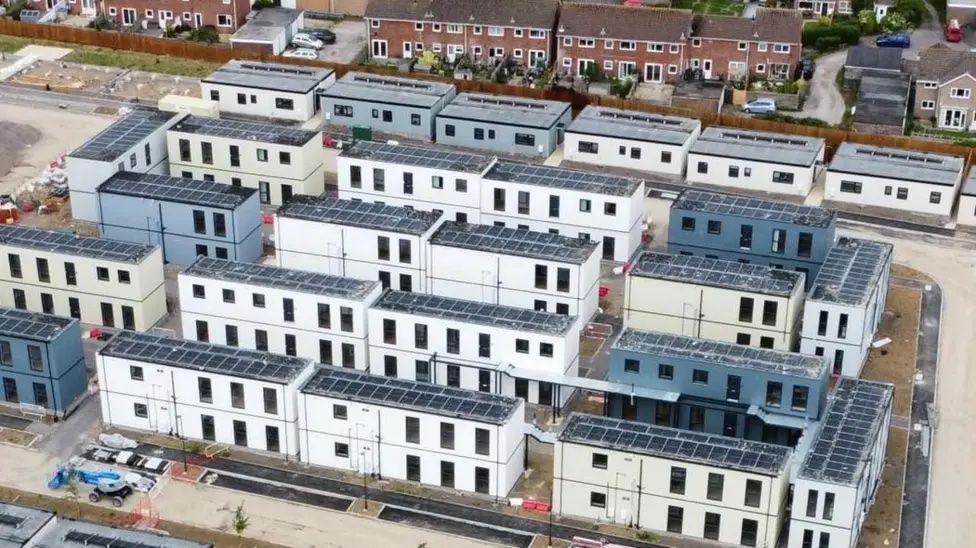
Ninety one and two storey temporary cabins pictured while under construction on the site of a former school in Llantwit Major
- Published
Since leaving her home in Kyiv when the war with Russia broke out, Kateryna Gorodnycha and her son have been living with sponsors and in a hostel.
They are some of the first people to move into temporary cabins in the seaside town of Llantwit Major in the Vale of Glamorgan.
"I really love it. It's our first home in Wales," said Ms Gorodnycha. "We've been living in one room. My son's very happy to have his own bedroom."
However, the 90-unit project - which will house refugees and homeless families - has been branded an "eyesore" by some local residents who claim there was no consultation process.
Vale of Glamorgan council said there was an "urgent need" for homes for refugees and homeless families and that there was an "engagement process" with locals.
Permitted development rights meant the local authority did not need planning permission to construct the units, which will stand for five years.
Welsh miners in Ukraine to repay 1984 strike help
- Published26 February 2024
Ukraine 'built more wind farms than Wales' amid war
- Published15 October 2024
Refugee returned to Kyiv due to state of UK home
- Published14 March 2024
Before fleeing Ukraine, Ms Gorodnycha, was working and living In Kyiv as a TV producer. She moved into the new emergency housing with her teenage son last week.
"Before February 2022 I had a beautiful flat in Kyiv on the 17th floor next to the Dnipro River and I had grants to film a documentary.
"It was a good life... it all just fell apart in one night.
"But I am very grateful for this [home] and how kind people have been."
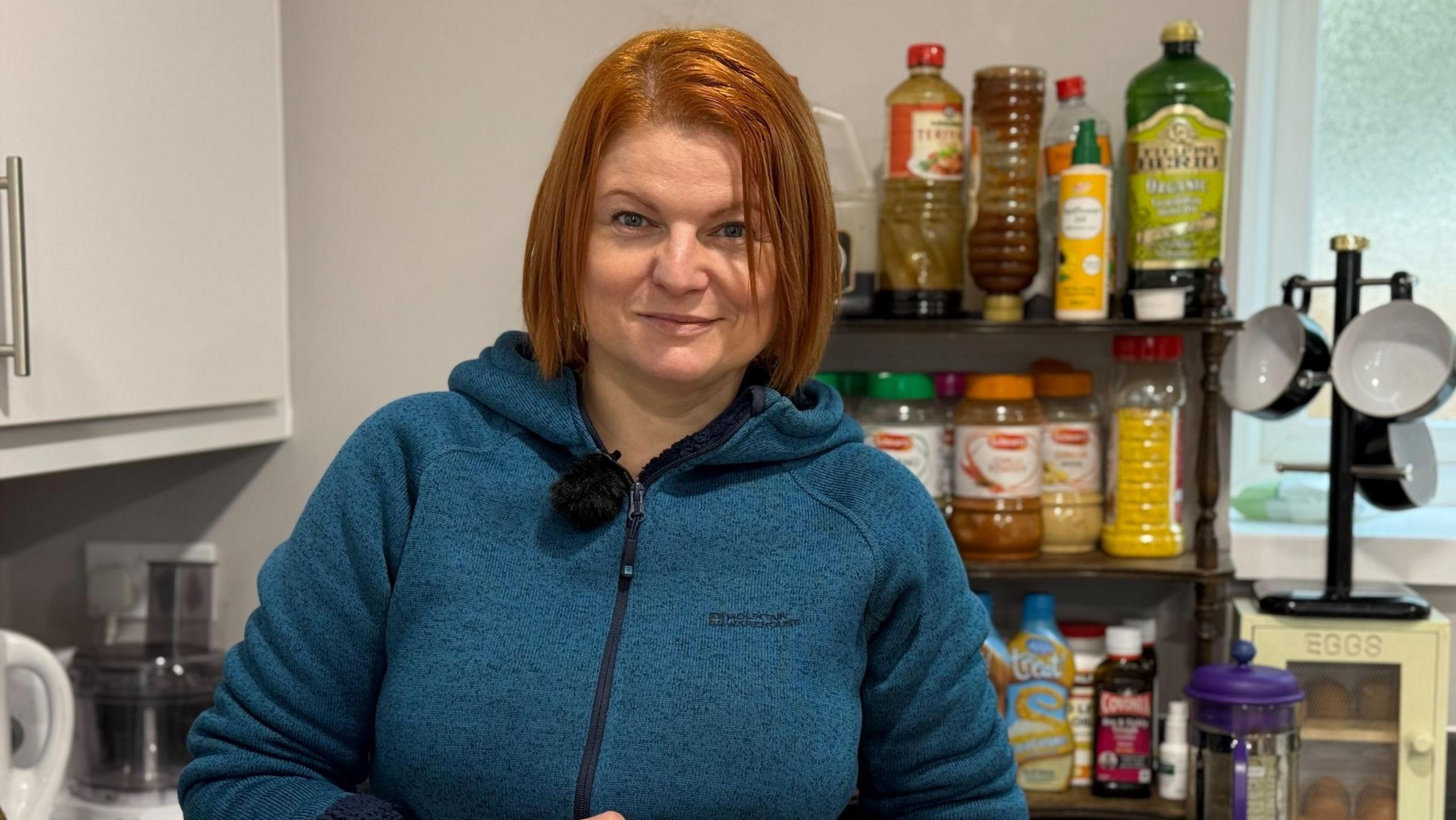
Refugee Kateryna Gorodnycha says the unit is her first home in Wales after fleeing Ukraine more than two years ago
"We didn't know what to do when we first moved in because of all the space," Ms Gorodnycha added.
She said she saw her son take a kettle to the bathroom for water and had to remind him that they had a kitchen sink now.
"Our first night was perfect because I have my own bedroom and couldn't hear my son snoring," she joked.
Kateryna has lived with sponsors near Cowbridge and a hostel in Barry and said the new location of her home is "a dream".
"In Ukraine there aren't many places on the coast... it's a huge event to go to the beach, but here you can just walk and see the sea and waves."
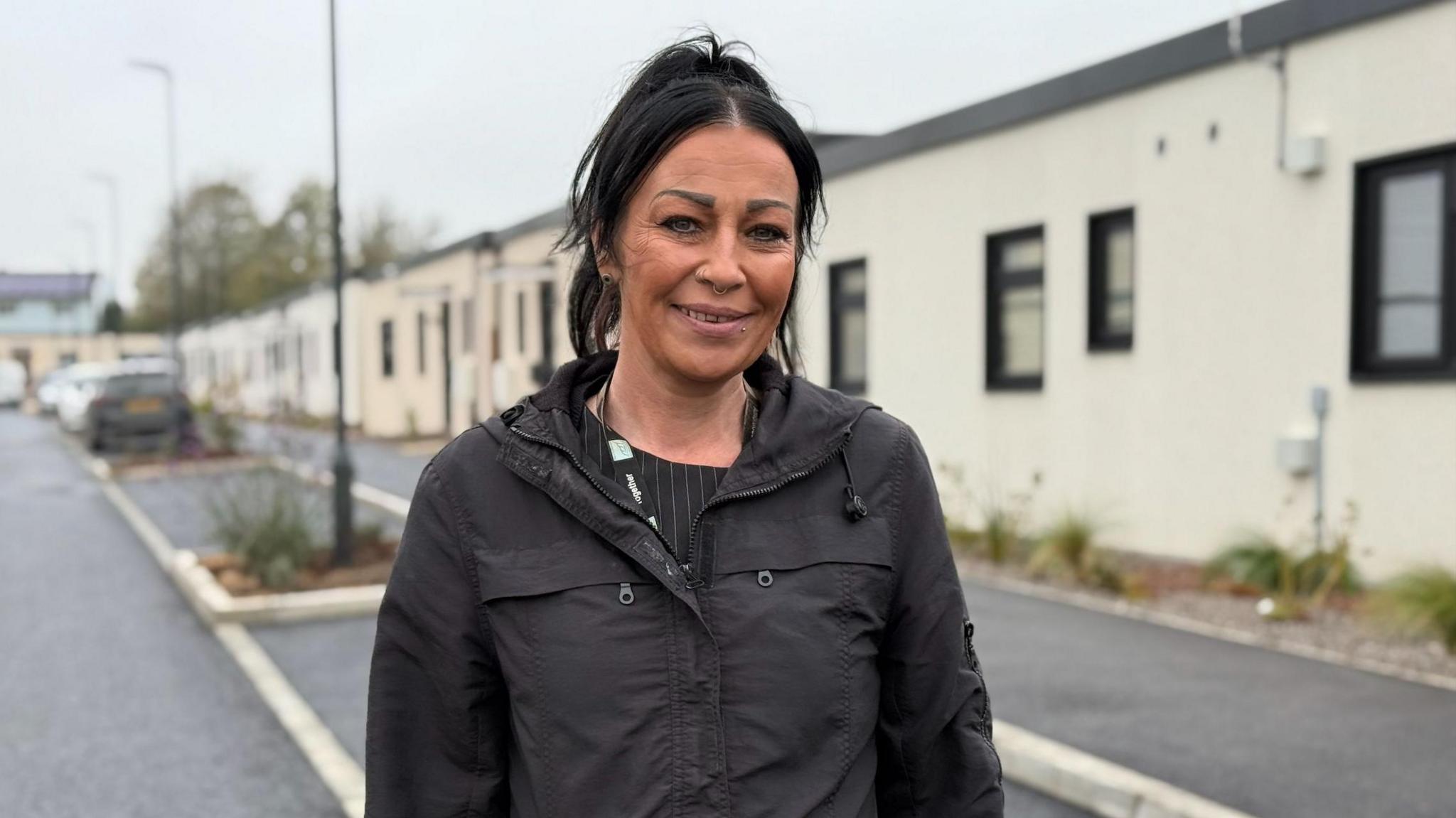
Kate Hollinshead from Vale of Glamorgan council says it will be a 50/50 split of Ukrainian refugees and local homeless families
Kate Hollinshead, from Vale of Glamorgan council, said about 300 people will live at the currently half-full site, split 50/50 between Ukrainian refugees and homelesss families.
"Ukrainian refugees will be allocated first but we will also allocate to homeless families from the Vale of Glamorgan who have been living in temporary accommodation," she said.
The units are a mix of one and two-storey one, two, three and four-bed homes for use on a short-term basis until more permanent housing is secured.
However, not everyone is pleased by the new development, notably retired RAF engineer Steve McGranaghan, who lives opposite the units.
"I'm feeling very disillusioned and broken," he said.
"It's affected my health and given me sleepless nights, this was a done deal behind closed doors by the council.
"It's cost £25m, which is the biggest investment the town has had at government level, and we end up with this carbuncle."
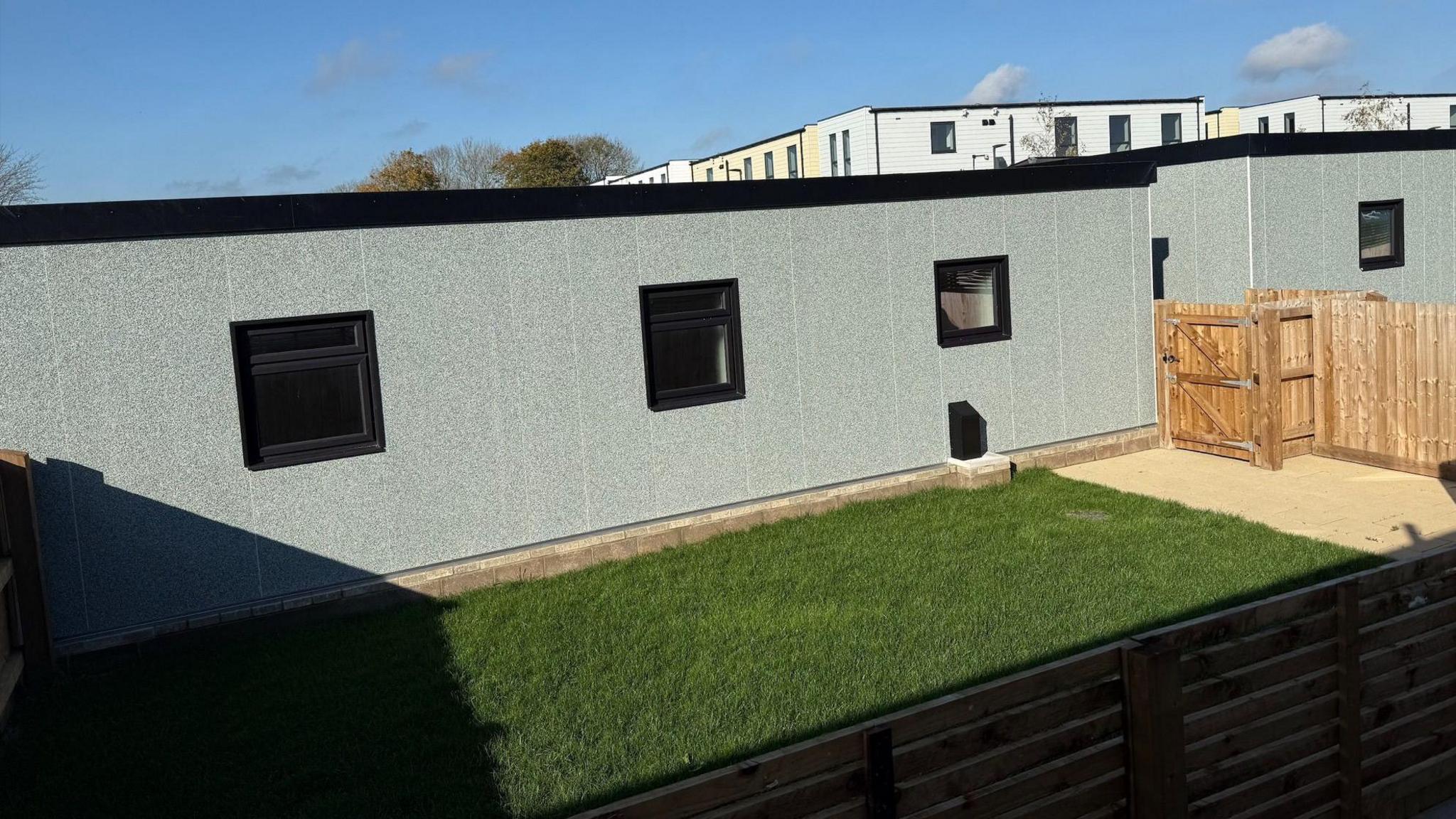
Steve McGranaghan says he is in "disbelief" every time he looks out of his bedroom window
Vale of Glamorgan council and the Welsh government have invested in the development at a cost of about £25m at the former Eagleswell school site.
Dave Thomas, of the 2,000-strong Eagleswell action group on Facebook, said the development looks like his "shed with a felt roof".
"When this went to planning it was already determined, they were already built and they're not going to say that's 25 million pounds spent let's take the units away," he said.
"There was no consideration to anyone living here already, it was just a means to an end.
"They decided let's get as many units on as we can and squeeze them in and get as many people in as we can and who cares what it costs."
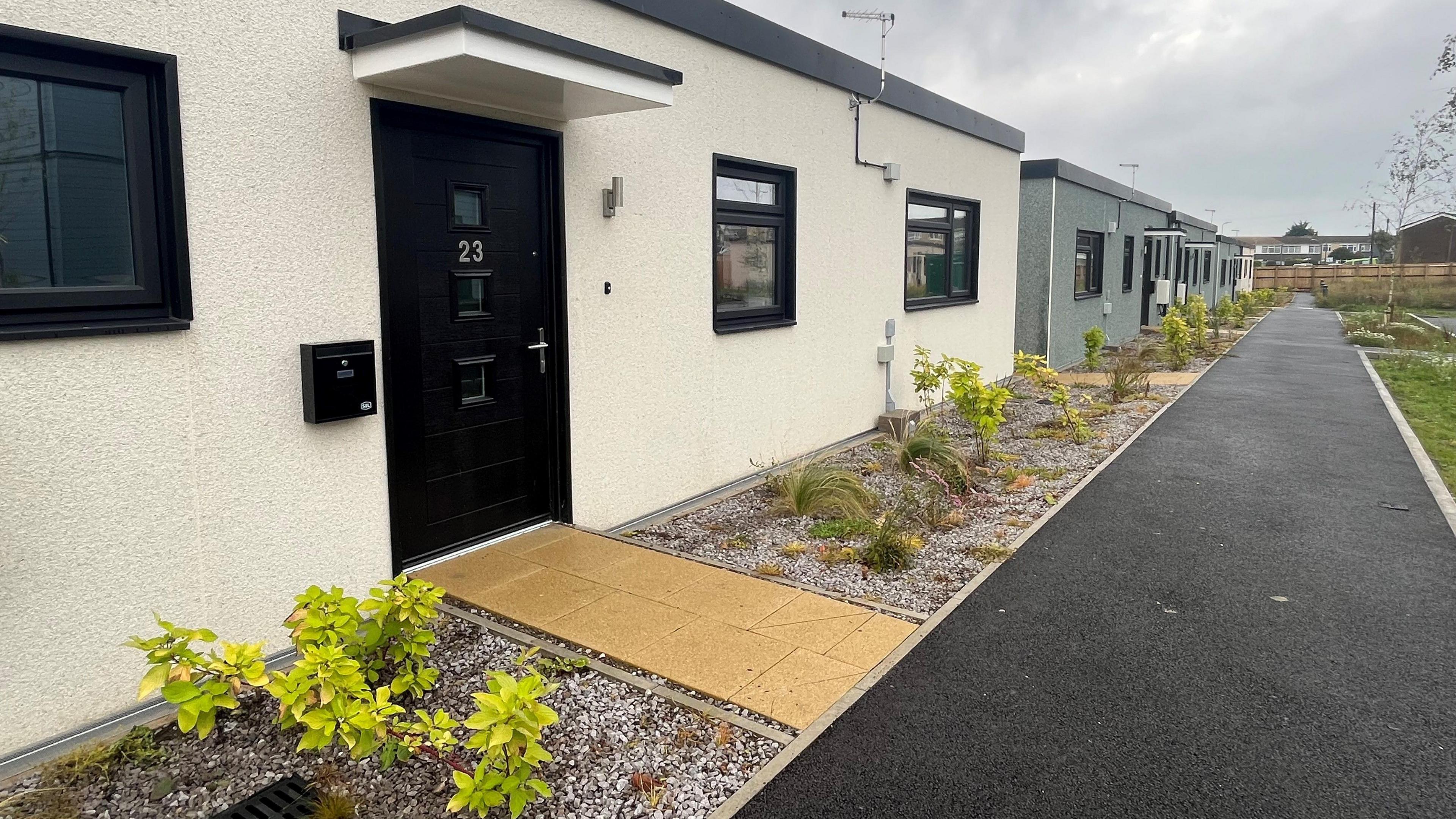
The site now known as Heol Croeso has seen its first families arrive at the temporary homes
Vale of Glamorgan council said it had seen "unprecedented levels of extreme housing need".
A spokesperson for the site, now known as Heol Croeso said: "The council has been involved in extensive communication and engagement activity with Llantwit Major residents regarding the Heol Croeso development.
"The development went through the normal planning process and was approved by committee after meeting the necessary requirements.
"Steps were taken to maintain privacy and address other concerns raised as part of that process.
"The units have permission to remain in place for a maximum of five years and plans regarding their removal will be published in the next 12 months."
- Published1 December 2022
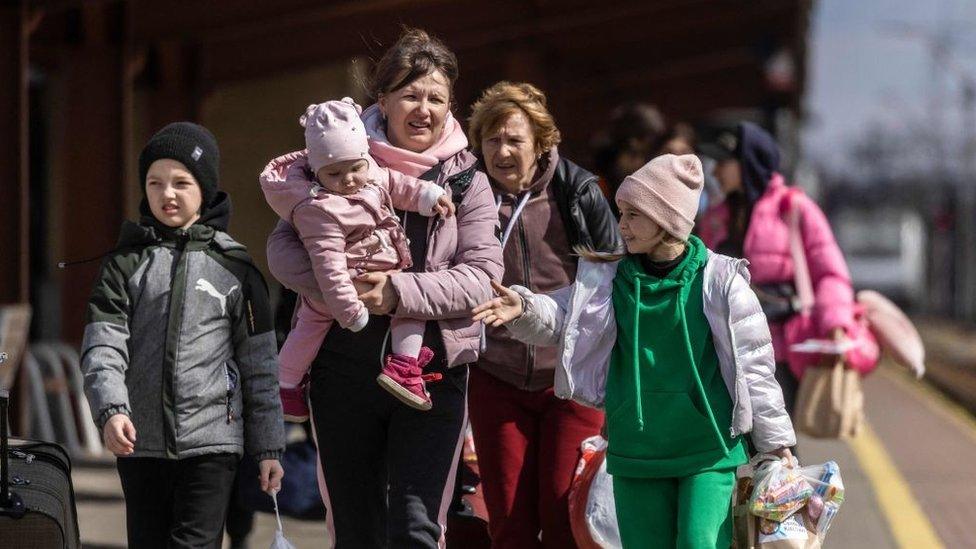
- Published27 August 2024
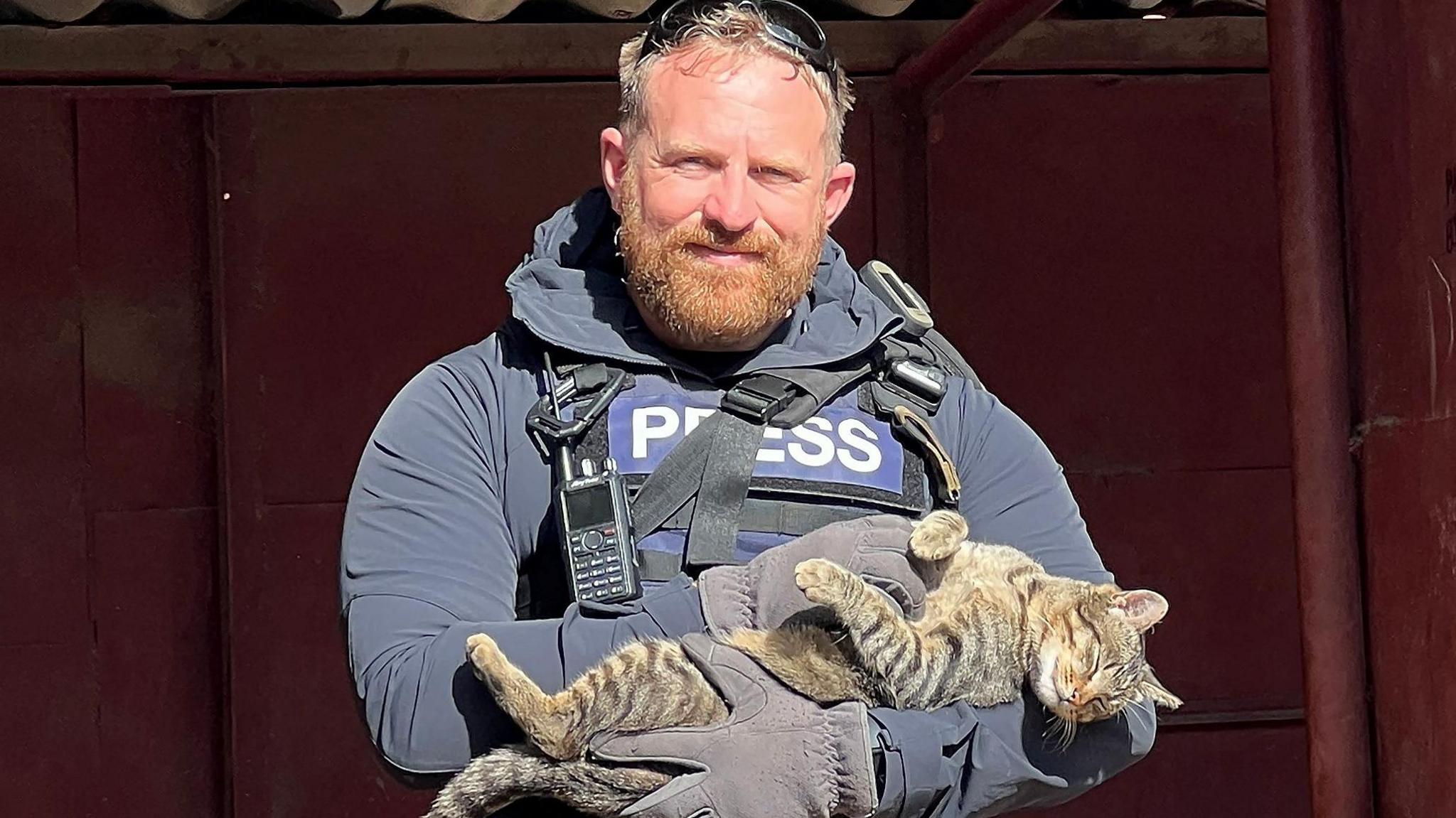
- Published5 February 2024
